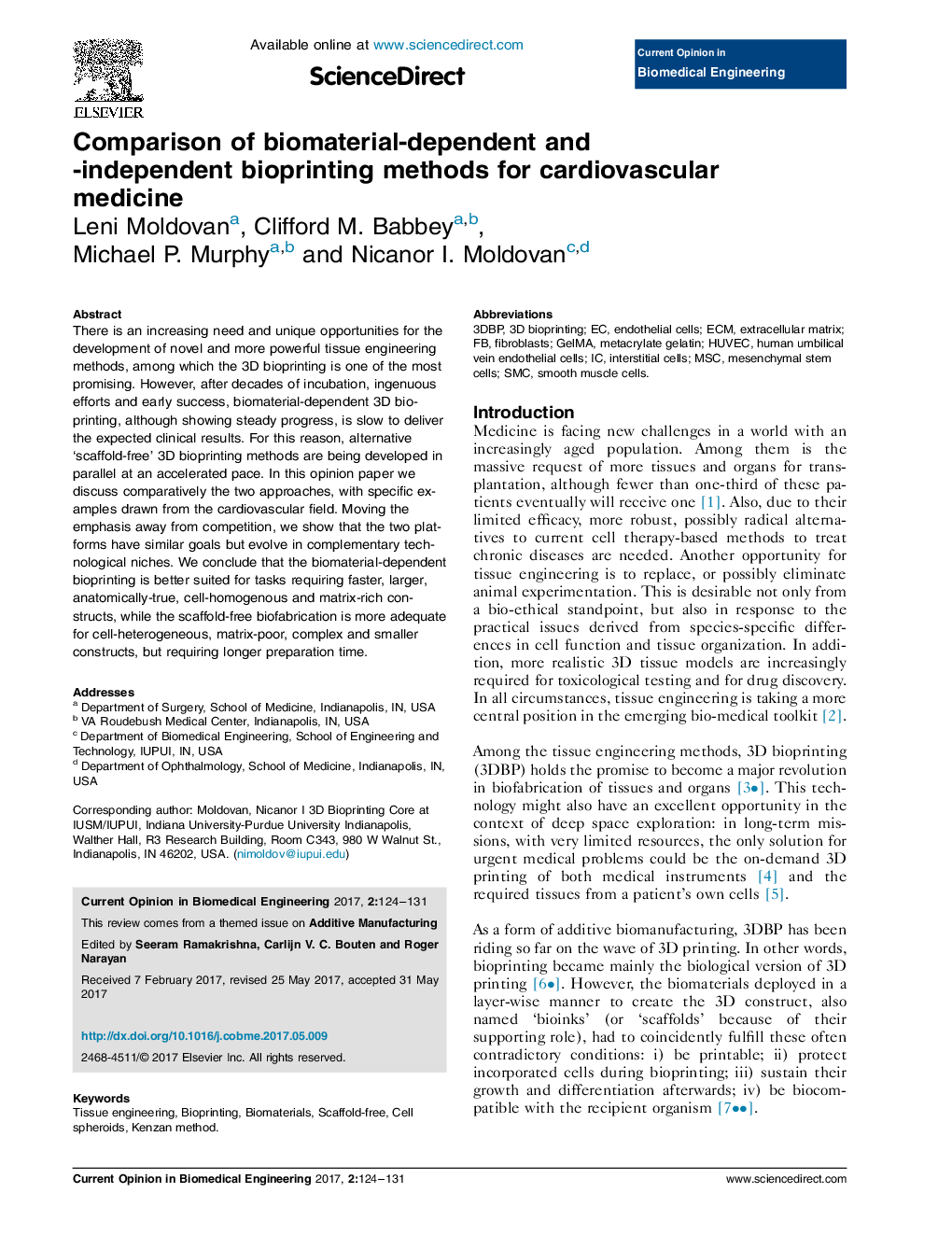| Article ID | Journal | Published Year | Pages | File Type |
|---|---|---|---|---|
| 8919051 | Current Opinion in Biomedical Engineering | 2017 | 8 Pages |
Abstract
There is an increasing need and unique opportunities for the development of novel and more powerful tissue engineering methods, among which the 3D bioprinting is one of the most promising. However, after decades of incubation, ingenuous efforts and early success, biomaterial-dependent 3D bioprinting, although showing steady progress, is slow to deliver the expected clinical results. For this reason, alternative 'scaffold-free' 3D bioprinting methods are being developed in parallel at an accelerated pace. In this opinion paper we discuss comparatively the two approaches, with specific examples drawn from the cardiovascular field. Moving the emphasis away from competition, we show that the two platforms have similar goals but evolve in complementary technological niches. We conclude that the biomaterial-dependent bioprinting is better suited for tasks requiring faster, larger, anatomically-true, cell-homogenous and matrix-rich constructs, while the scaffold-free biofabrication is more adequate for cell-heterogeneous, matrix-poor, complex and smaller constructs, but requiring longer preparation time.
Keywords
Related Topics
Physical Sciences and Engineering
Engineering
Biomedical Engineering
Authors
Leni Moldovan, Clifford M. Babbey, Michael P. Murphy, Nicanor I. Moldovan,
